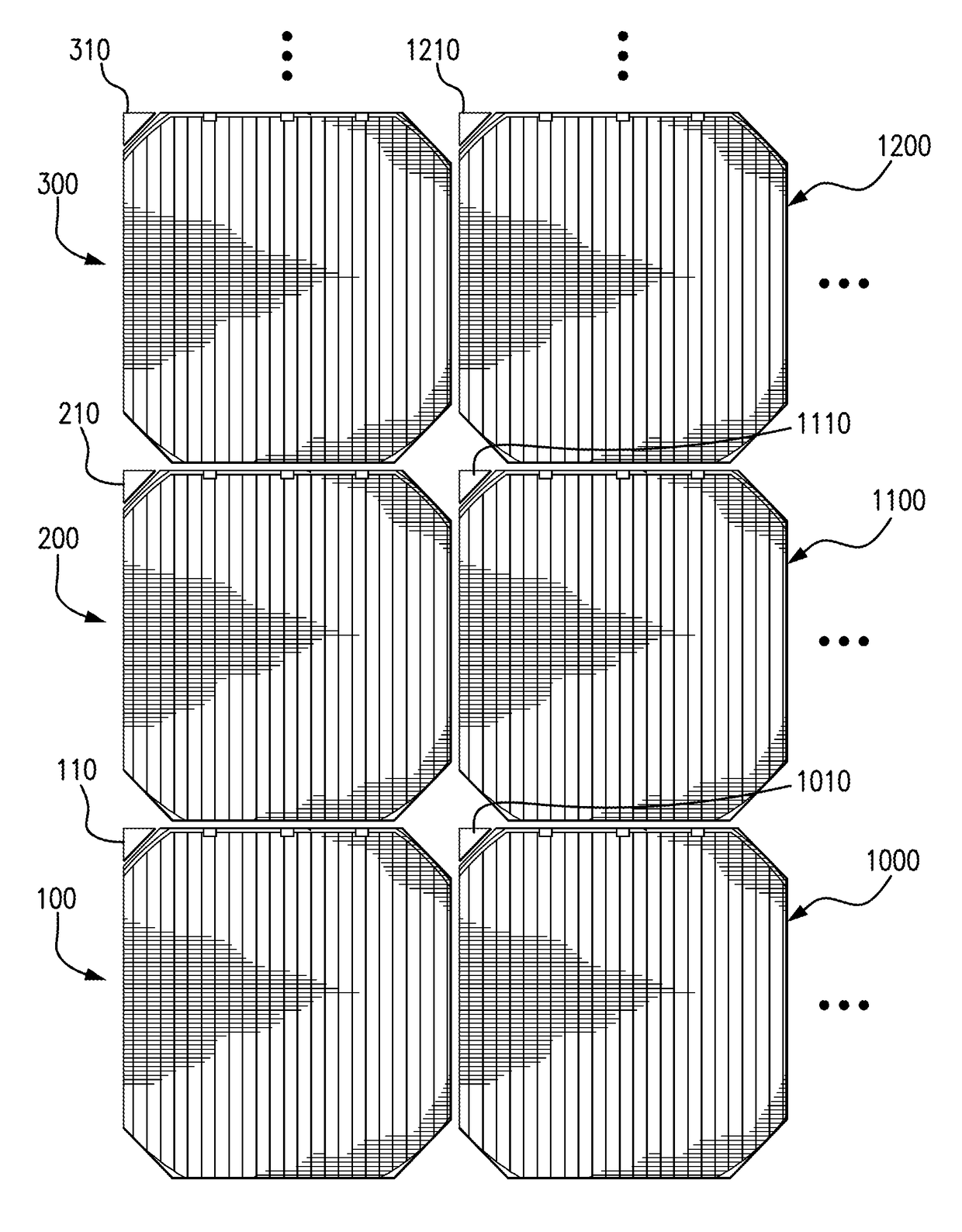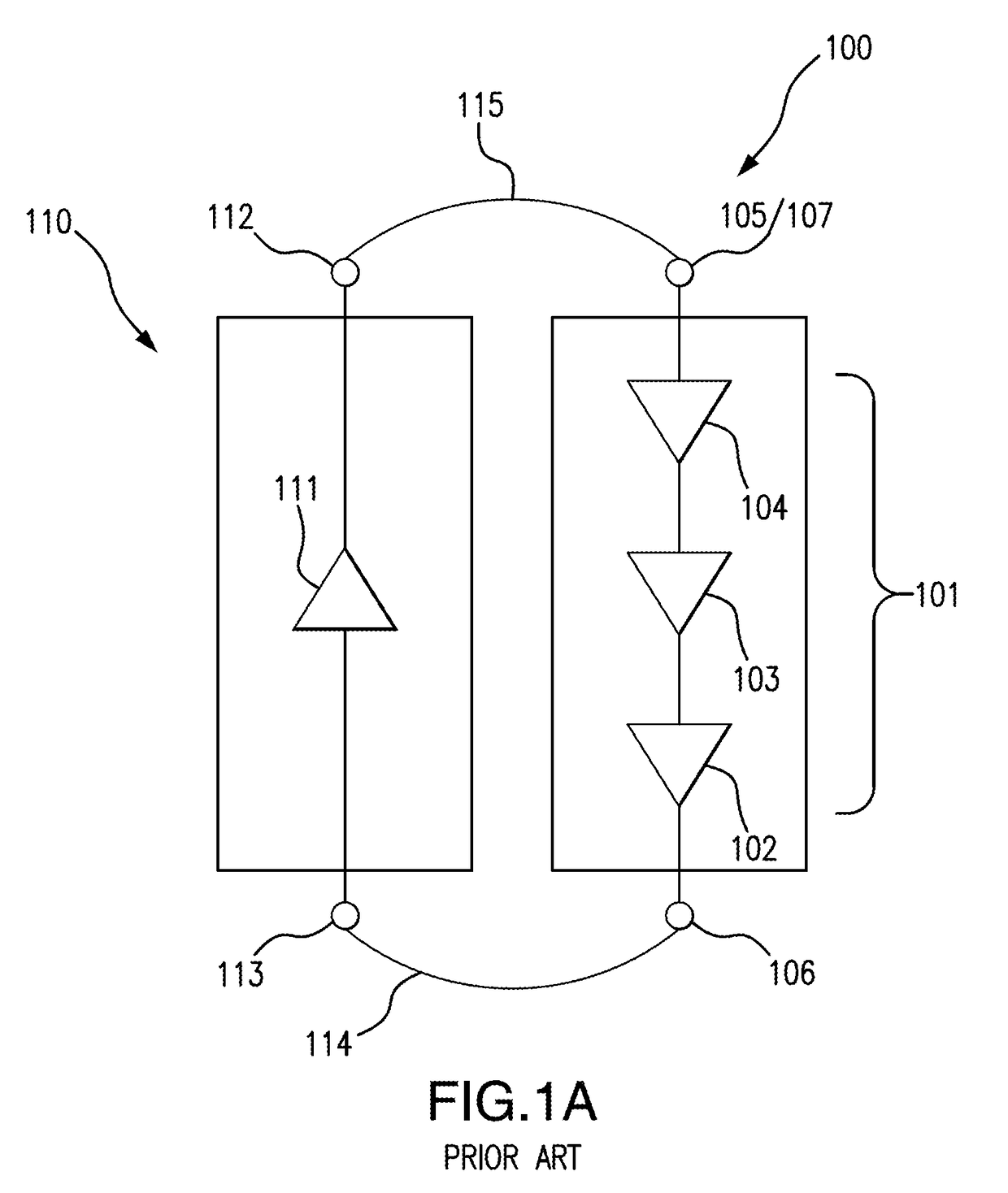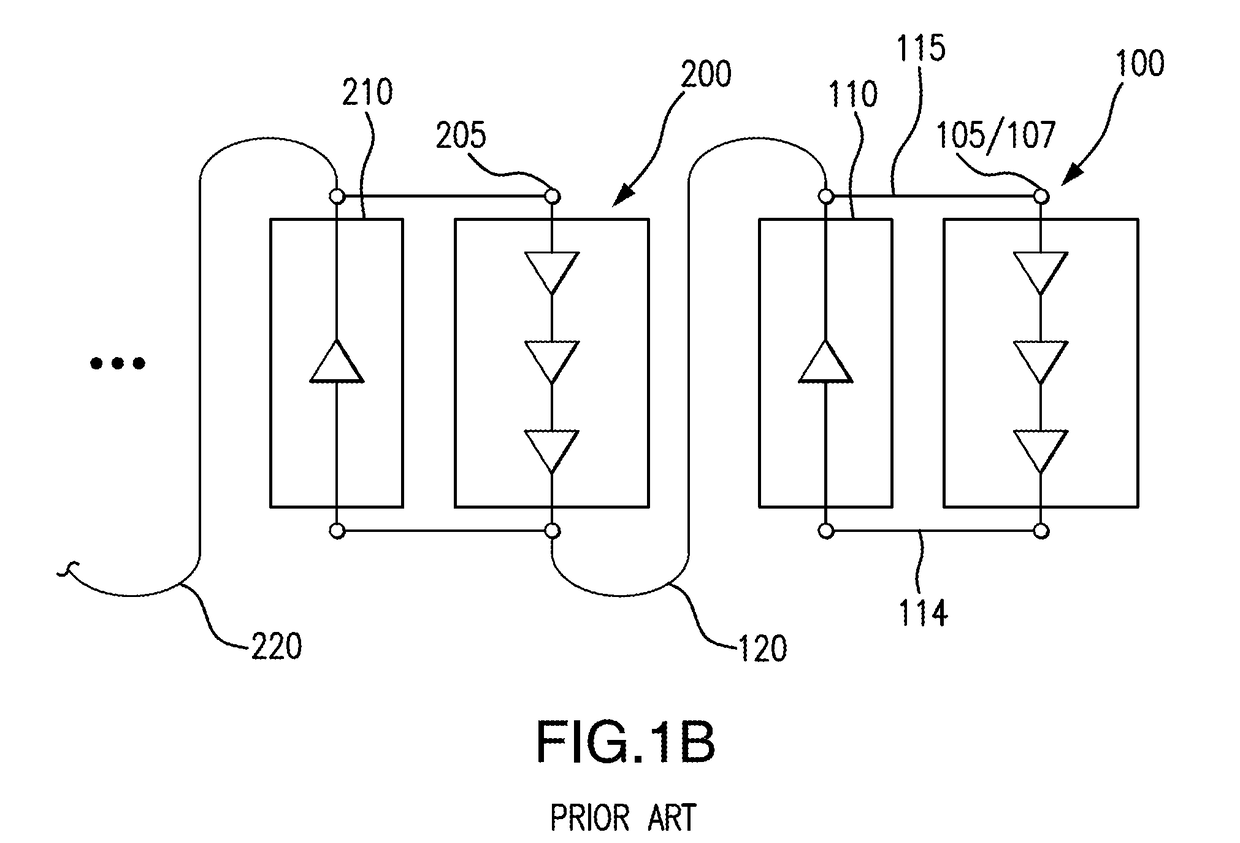Space solar cell panel with blocking diodes
a solar cell and diode technology, applied in the field of photovoltaic power devices, can solve the problems of increasing the overall cost of the photovoltaic array or panel, affecting the efficiency of the solar cell surface, and requiring a large amount of energy, so as to enhance the efficient use of space
- Summary
- Abstract
- Description
- Claims
- Application Information
AI Technical Summary
Benefits of technology
Problems solved by technology
Method used
Image
Examples
Embodiment Construction
[0050]FIG. 2A schematically illustrates how a solar cell 100 with cropped corners can be provided with a bypass diode at one cropped corner, and FIG. 2B schematically illustrates how a bypass diode 110 is arranged in correspondence with one cropped corner and how two blocking diodes 130 and 140 are arranged in correspondence with two of the other cropped corners, in accordance with one embodiment of the disclosure. The two bypass diodes 130 and 140 have substantially triangular shapes, making efficient use of the space at the cropped corners.
[0051]FIGS. 2C, 2D and 2E illustrate how, in accordance with one embodiment of the disclosure, the solar cell can be positioned on a laminar support 140 comprising three layers 141, 142 and 143, to which the solar cell 100 is joined by an adhesive layer 25. The blocking diode 130 is connected to the solar cell 100 by means of a connector 137 which in some embodiments is dispersed in a cut-out region of the adhesive layer 25. The blocking diode 1...
PUM
 Login to View More
Login to View More Abstract
Description
Claims
Application Information
 Login to View More
Login to View More - R&D
- Intellectual Property
- Life Sciences
- Materials
- Tech Scout
- Unparalleled Data Quality
- Higher Quality Content
- 60% Fewer Hallucinations
Browse by: Latest US Patents, China's latest patents, Technical Efficacy Thesaurus, Application Domain, Technology Topic, Popular Technical Reports.
© 2025 PatSnap. All rights reserved.Legal|Privacy policy|Modern Slavery Act Transparency Statement|Sitemap|About US| Contact US: help@patsnap.com



